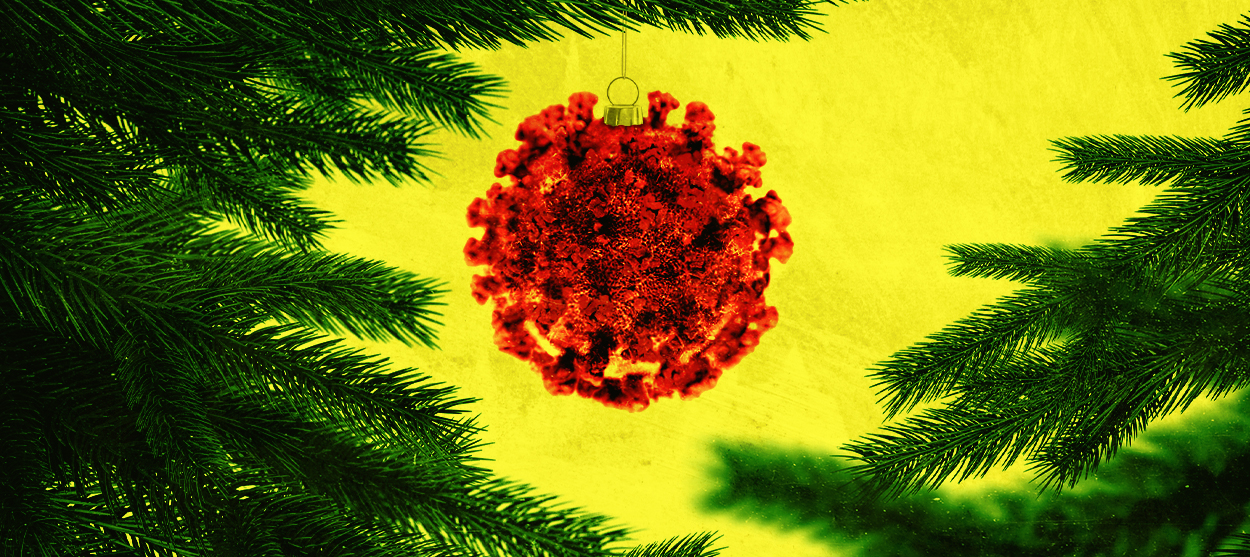Baby, it's COVID outside
On Americans' catastrophic impatience this Christmas


Not content with precipitating a dramatic coronavirus surge with reckless Thanksgiving travel and maskless get-togethers, the heedless citizens of these United States seem determined to bring about another exponential increase in cases and mortality with their holiday plans, just days before many older Americans start receiving their vaccines. Confronted with widespread death, immiseration, and suffering caused in large part by their own refusal to take this thing seriously, millions of Americans are preparing to crisscross the country to see each other anyway. The theme song of this year's holiday season might as well be Baby It's COVID Outside.
We've seen this movie before. Despite plaintive appeals from public health experts and sensible elected officials, too many Americans made all the wrong moves over the Thanksgiving holiday. The number of people who didn't travel at all dropped just 6 percent year-over-year from 2019. Millions descended on airports and highway rest stops and seeded the virus far and wide, helping to turn just about every state in the union into a raging COVID fire. The seven-day rolling average of cases stood at an already calamitous 165,000 on Thanksgiving day. It is now nearly 240,000, with no end to the spike in sight.
And now it's happening again. Eighty-five million people plan to travel in the coming week, and more than a million have passed through airports every day this week. Sure, movement is way down from last year, but in a functioning country it would be close to zero. Who are these people lining up to gulp down each other's plague droplets in the Starbucks line at O'Hare? The national death tally is now 316,000. What would it have to be for people to change their behavior? A million? Five million?
The Week
Escape your echo chamber. Get the facts behind the news, plus analysis from multiple perspectives.

Sign up for The Week's Free Newsletters
From our morning news briefing to a weekly Good News Newsletter, get the best of The Week delivered directly to your inbox.
From our morning news briefing to a weekly Good News Newsletter, get the best of The Week delivered directly to your inbox.
Anyone who has spent five minutes reading about this horrible disease knows that bodies start stacking up a few weeks after infections rise. The seven-day average of deaths was around 1,500 on Thanksgiving and is now over 2,600. The latter number is actually the product of the Thanksgiving-era caseload, and we are consequently already locked into a daily death toll of about 3,500 by mid-January. If there is a similar increase in post-holiday cases — all but guaranteed based on what we're seeing unfold — that average could creep up to well over 4,000 before it finally starts to come down as Americans over 75 get their Moderna and Pfizer vaccines. If this carnage continues unchecked into February, we're looking at well over 100,000 people who will die just in the next month or so because so many lacked the fortitude and solidarity to put off their gatherings for a few months. And that's assuming there isn't an increase in case fatality rates when hospitals get overrun.
If they can't be persuaded, and they can't be shamed, people should at least have to face the consequences with eyes wide open.
My parents are in their mid-70s and live far from both of their sons. Christmas is a particularly treasured holiday for them, a time during which we typically cram ourselves together with my brother and sister-in-law and their four kids for a few days of precious togetherness. We sing Christmas carols and cook elaborate meals and shower the kids with gifts. Both of my folks have had their share of health struggles, and the cruelty of having to give up our holidays after such an awful, isolating year, not knowing how much time they have left, is difficult for them, and for us, to accept.
But once the upturn in cases worsened in October, there was never any serious debate in our family about what to do. My dad is probably weeks, and my mom a month or two, from getting vaccinated. My brother is an oncologist who should get his by the end of this month. So the calculus was this: see each other like normal in December and risk agonizing, lonely deaths, possibly depriving my toddler and his cousins of their grandparents forever, or gird ourselves for the struggle and stay steadfast just a little bit longer so that at least the two of them can travel to see us this spring.
A free daily email with the biggest news stories of the day – and the best features from TheWeek.com
I am at a complete loss to understand how millions of people are choosing option A. Not only do they risk infecting, debilitating, and killing people in their own families, they are also jeopardizing mine. Despite months of adhering strictly to guidelines, forfeiting their social lives, and enduring a nightmarish and unexpected period of near-total isolation late in life, my parents might get the virus at the grocery store because some mask-less bozo decided he had the right to gather around the Christmas tree with his extended family.
In a poignant scene from the underrated Star Trek V (1989), the starship Enterprise's doctor, Bones McCoy, confronts a painful memory — with his father ailing and in constant, unbearable pain, he agrees to euthanize him shortly before a cure for his ailment is discovered. It's a sadness he will carry with him for the rest of his life. Would he have killed his father if he knew that salvation was nearly at hand? Of course not. So why are so many of us making that incomprehensible choice?
It's not like the vaccines are years away. It can't be emphasized enough that the end is very much in sight. Front-line workers are already getting vaccinated, and whether the last American who wants a vaccine gets it in May or August, things are going to get dramatically better months before that happens. As care-home residents and workers — still one of the chief sources of infection — begin to get inoculated, rates of hospitalizations and deaths will start to come down, and fast. When those over 65 get theirs, it may become broadly possible for people to start safely seeing some of their friends and relatives again. Less-at-risk adults will go through that same process beginning in April or May when the weather warms up and outdoor dining and activities become more available, and at that point the pandemic and its attendant miseries will start to recede — slowly at first, and then hopefully with a joyful bang this summer.
But if you're about to board a plane to party down with your family and friends, you are uncordially uninvited from the Victory Over COVID celebrations to come.
I hope it's worth it.
David Faris is a professor of political science at Roosevelt University and the author of "It's Time to Fight Dirty: How Democrats Can Build a Lasting Majority in American Politics." He's a frequent contributor to Newsweek and Slate, and his work has appeared in The Washington Post, The New Republic and The Nation, among others.
-
 Political cartoons for January 4
Political cartoons for January 4Cartoons Sunday's political cartoons include a resolution to learn a new language, and new names in Hades and on battleships
-
 The ultimate films of 2025 by genre
The ultimate films of 2025 by genreThe Week Recommends From comedies to thrillers, documentaries to animations, 2025 featured some unforgettable film moments
-
 Political cartoons for January 3
Political cartoons for January 3Cartoons Saturday's political cartoons include citizen journalists, self-reflective AI, and Donald Trump's transparency
